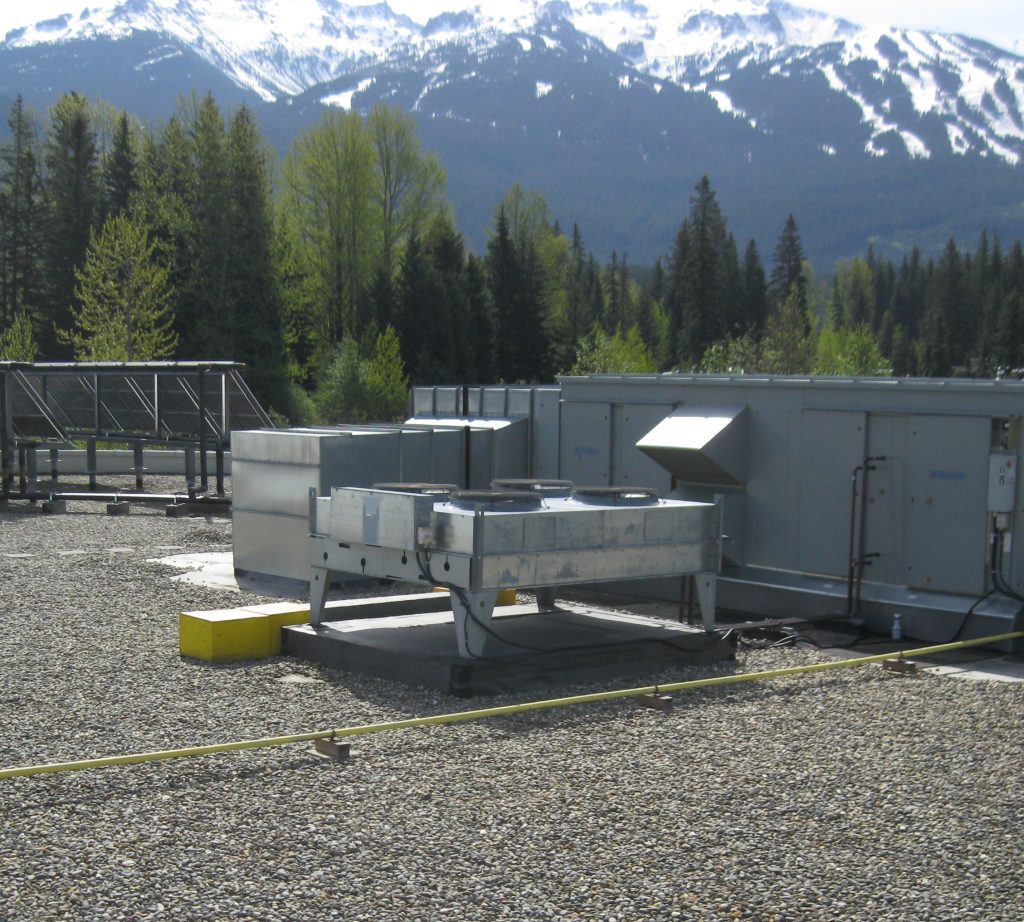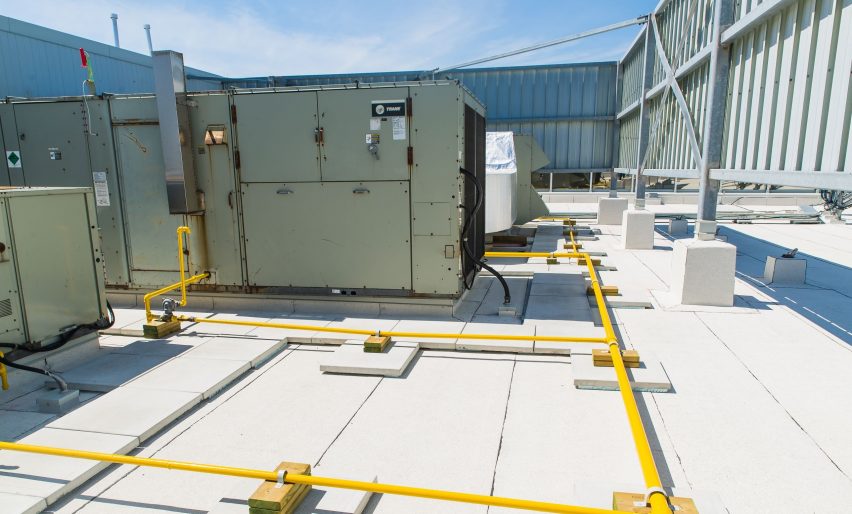Rooftop unit (RTU) replacement projects don’t happen very often, but when they do, building owners and facility managers should know that it’s not always as simple as swapping out the old with the new. Codes, technology, and even snow load requirements can change on a regular basis — meaning, it’s good to be prepared for some variances to your original plan and footprint.
“RTUs are pre-packaged, self-contained HVAC units you commonly see on flat-roofed commercial buildings and warehouses,” said Nicole Babuik, Associate, RJC Engineers. “In terms of types of units, there’s a plethora of options available, and because of the way flat roof buildings are made, specific issues can arise if the owner isn’t adequately prepared.”
Built to provide both heating and cooling for large industrial spaces, most rooftop HVAC units typically have a lifespan of 20 to 30 years. When replacing older units, the tendency among building owners is to adopt a “like-for-like” approach in an effort to minimize costs and complications. But for the consultants and mechanical engineers helping with the project, “like for like” can mean very different things.
“Owners typically want to replace the old unit with a newer model that offers the same or better heating and cooling capacity,” she said. “But what they don’t always realize is that the dimensions and the weight of the unit may change. Structurally, the building will feel and react differently to a larger unit, especially if it hovers around the threshold for snow accumulation.”
Here in Canada, snow accumulation is an important consideration when performing any roofing system alteration, and a larger RTU may trigger the need for structural upgrades to support the additional weight.
“While in some cases, structural upgrades might be possible with minimal interior work,” said Bubuik, “it would still require substantial roof work and considerable additional costs. If it’s necessary to upgrade the structure entirely from inside, interior spaces and daily operations will be impacted—which adds an additional level of disruption and cost implications.”
According to Bubiak, the reason is that some of today’s roof structures are tightly designed in such a way that load-checking can be challenging and trigger additional investigation work. “You can’t necessarily just grandfather in a replacement unit and attribute it to maintenance,” she said. “There are a lot of subtle things that must be checked off from a structural perspective that many building owners aren’t aware of.”
Aside from snow loads, duct work is something that shouldn’t be overlooked. The supply and return air ducts that feed into the RTU need to up to code, and in some areas, seismically retrained. Before a RTU replacement project, Bubuik advises owners to investigate the existing ductwork and perform any necessary maintenance or seismic upgrades to ducts and other ancillary services to ensure the equipment is up to standard. Doing so will reduce costs and ensure the new unit is secure and functional for the long haul.
 In summary, here are Babuik’s top 3 tips for undergoing a successful rooftop unit replacement project:
In summary, here are Babuik’s top 3 tips for undergoing a successful rooftop unit replacement project:
- Understanding that a “like for like” replacement from an HVAC cooling and heating perspective does not mean the dimensions and weight of the unit will be the same. The difference should be established before moving forward with the purchase of a new unit if you want to avoid structural upgrades to the roof.
- If you do require a larger unit that exceeds the weight and/or footprint of the current unit, be sure to hire a structural consultant to ensure the roofing system can handle the additional load.
- Schedule any other maintenance work at the same time as the RTU replacement project to avoid issues and reduce the overall costs associated with the upgrades.
“Each project is different,” she warned. “Unexpected issues can always arise. It’s good to be as prepared as possible. In fact, don’t be surprised if a building inspector asks for a visual or acoustical screen. Screening requirements vary by municipality, the rules around rooftop units are not as straightforward as you’d think.”
For more information on Rooftop Unit Replacement Projects, visit www.rjc.ca, or contact Nicole Babuik directly at nbabuik@rjc.ca







